Blog Has Been Moved!
Greetings readers. The Fair Trade Link has been moved to mercadoglobal.org/blog. You can continue to keep up with MG’s partner artisans, latest news, and upcoming events at the new location. Thanks for reading!
Sincerely,
Harry
A Short Chat About a Long Journey
Two artisans came by last week to work on new jewelry designs for Mercado Global. They were kind enough to offer me some of their time to talk about their lives.
Estela Quisquiná Morales is the aunt of Rosa Tun Quisquiná. The two women are artisans from Chuacruz and have been partnering with Mercado Global for the past year. Both women speak Kaqchikel as a first language, and they began learning Spanish at around age twenty.
Chuacruz is an isolated community that receives very little tourism. As a result, prior to partnering with Mercado Global, Estela and Rosa were forced to make the two hour trip twice a day to and from Panajachel, a more popular tourist location, to sell their jewelry. Pay was inconsistent, and much of the little money they managed to earn was spent on daily travel expenses.
Nowadays, because of orders they have received through Mercado Global sales, Estela and Rosa, like the other artisans from their community, can work from home. This means less time and money spent on traveling and more time spent caring for their children and producing beautiful artesanias. Please help support these inspiring women by browsing some of their beautiful designs on our e-commerce site.
Breaking the Cycle: Education, Income, and Ethnicity in Guatemala
Understanding the relationship between poverty and education in Guatemala, and how Fair Trade is helping.
In Guatemala, there is widespread and significant inequality in educational opportunities for indigenous children living in rural communities. According to this 2007 report from the Population Council, educational inequality in Guatemala, the country with by far the largest indigenous population in Central America, is the highest in Latin America. Maya adults have less than half the level of schooling of Ladino (non-indigenous mestizo) adults: 2.5 years versus 5.7 years. The Inter-American Development Bank observes that for the past decade the percentage of Guatemala’s indigenous working population with less than a secondary education consistently hovers around 90%, compared with about 75% for Ladinos.
The indigenous population also consistently earns less than its Ladino counterpart. The Inter-American Development Bank reports that between 2000 and 2006, the average monthly income for Ladinos was almost twice that of indígenas. Even in rural areas, where a general lack of economic opportunity tends to even the playing field for everyone, Ladinos earned an average of Q1,328 between 2000 and 2006, compared with just Q883 for indígenas (66% of the Ladino figure).
These figures raise the question: Are educational and financial inequality for indigenous people in Guatemala linked? Are they both caused by some additional variable, like racism? Is the apparent connection just coincidental? Or, do they cause each other in a cyclical chicken-and-egg scenario? Research tends to suggest the latter.
There is no doubt that the less money a family has, the lower level of education will be attained by the children from that family. The Guatemala Living Standards Measurement Survey from 2000 reports that the main reason that children between the ages of 7 and 12 drop out is a lack of money – a factor that does not vary by gender or ethnicity. Likewise, among 13 – 24-year-old respondents, the most frequently cited reasons for nonenrollment were household chores (for females) and work (for males). Among both sexes, a lack of money was the second most common reason. The fact that families with immediate financial emergencies are better served if their children work and that education in Guatemala is not free by any means (uniforms, travel expenses to and from school, etc.) create this causal relationship.
Conversely, the lower level of education attained by a Guatemalan, the less income-earning opportunities he or she will have. Sources suggest that the number one determinant of gender and ethnic wage disparities in Guatemala is level of education. This 2008 study from the Inter-American Development Bank, for example, concludes that “Wage gaps in Guatemala are partially explained by differences in human capital characteristics, especially education, between indigenous and non-indigenous and males and females, which calls for equalization of educational opportunities for the population.” Thus, the income inequality between ethnicities and genders can also be explained because of inequalities in access to education.
And so we are left with a vicious cycle: less education means less income, and less income means less education. Given this predicament, what can we do to break the cycle?
Mercado Global is partnering with resource-poor indigenous Guatemalans to break this cycle of poverty by creating income-generating and educational opportunities in Guatemala’s highland communities. We create opportunities to earn more income and achieve economic self-sufficiency by utilizing a scalable model that develops the capacity of rural women artisans to produce and deliver high quality products for major U.S. companies. Through its strategic partnerships Mercado Global has also been able to leverage the resources of U.S. and Guatemalan professionals to ensure the artisans have continuous product design assistance – an absolute necessity for ensuring ongoing demand for their products in the mainstream U.S. market. Our business platform and sales outlets have helped indigenous Guatemalan women artisans use their talents to earn a three-fold increase in their daily incomes.
And what are they doing with all that money? Primarily, they are using it to send their kids to school. Through a combination of increased income for local mothers and direct Mercado Global scholarships, 100% of elementary school-aged children of our original partner artisans are enrolled in school for a second consecutive year. Eighty percent of middle school-aged children of partner artisans are currently enrolled in school, a figure far above the national average. Mercado Global sales and clients have also funded 508 scholarships for local children. This degree of access to Guatemala’s frequently inaccessible educational system is downright unprecedented in the communities in which we work. And, as we have seen, when kids go to school for longer, they are able to earn more money, breaking the cycle of poverty that has affected their families for generations. These children will soon be the agents of progress and growth in their communities, their country, and the world.
We are happy to be along for the ride.
Cambria Cove Features Fair Trade Designs by Mercado Global
Cambria Cove, a catalog which features a “thoughtfully selected offering of unexpected delights from artisans, designers and visionary brands around the world,” now partners with Mercado Global to bring some our artisans’ unique designs to the global market. For the holiday season, Cambria Cove will feature Mercado Global’s beautiful Beaded Evening Bag.
As Jewelry Production Coordinator, I oversaw the production of the bag from start to finish. Mercado Global worked with three of our partner cooperatives to create these high-quality bags for Cambria Cove: San Jorge la Laguna, Artesanas Mayas, and Artesanas Atitlán. All three cooperatives are located in communities on the banks of Lake Atitlán.
As a former member of one of Mercado Global’s jewelry cooperatives, I could relate to the artisans’ excitement about the work opportunity they got due to this order – Mercado Global paid them three times the average daily wage in their communities. The creation of each one of these bags requires a great deal of patience, skill, and time. Despite the amount of care that is required, however, the women are eager to have many more orders because they are motivated by the increased earnings they are receiving.
Cambria Cove has also picked up our Fiesta Table Linens Collection. Each item in this gorgeous collection has a unique story. The table runner is derived from a unique scarf design created by artisans in the Chuacruz community. The inspiration for the napkins came from the fabric the women use to make scarves. The design for the napkin rings came from the bracelets the jewelry groups sell to tourists who visit Lake Atitlán year round.
You can see all our products that Cambria Cove carries here. We are pleased that Cambria Cove has chosen to support socially-responsible consumerism and help us in our efforts to end poverty in Guatemala.
NOTE: This blog post was written in Spanish and translated by Harry Stevens.
A Letter from Adriana: A Fair Trade Artisan Shares Her Story
Adriana Isabela Morales Quino is an artisan from the Artesanas Mayas cooperative in the small highland village of Panimatzalam. Her sewing group has worked with Mercado Global for the last two years, benefiting greatly from sales opportunities that we have been able to develop for them.
Yesterday, Adriana visited the office to write a letter to our supporters in the U.S. She dictated a letter to me expressing her appreciation for the opportunity Mercado Global sales have given her to earn enough to support her family and send her children to school. So, without further ado, here’s what Adriana says to everyone in the States:
Dear Mercado Global,
I want to tell you that Mercado Global, more than anything else, has been a great help. Before, we artisans had no work. There was no market for our crafts; we could find no one to sell to. Our cooperative, Artesanas Mayas, struggled a lot. Many people had no way to earn enough to provide for their families, and many children could not study in school.
Mercado Global came and gave us a way to sell our crafts. This has been a huge support for us and our families. Now, we have lots of orders. We like making the conference bags because it gives us work and money to support our families. It is important for women to support their children and husbands. Through Mercado Global, everything is getting better. All of the members of our cooperative are happier with each other, and we are very happy to help each other with the work.
We’ve received training from Mercado Global, too. Before, we knew how to use the sewing machines, but Mercado Global trained us to use them well. Because of the training, we are better sewers now and we are able to make more bags. We are very grateful for Mercado Global, and we are always available and interested in whatever project we can help with.
I am hopeful that we will continue to have orders from Mercado Global so that my children can keep studying and I can support my family as I have been. Thank you to everyone in the United States who has helped to give us the opportunity to work and earn an income. I would like to ask you to please continue to support our work however you are able to.
Sincerely,
One final note. Adriana never had the chance to finish first grade, so I had to take dictation from her. Her children, however, have been encouraging her to get back in school. They’ve kept telling her that she’ll be able to finish a primary education if she works hard and believes in herself. Finally, they convinced her. Now that she has extra money through her work with Mercado Global, Adriana is taking classes on the weekend. Next time she wants to send a letter, she won’t have to dictate it. She’ll get to write it herself.
Napa Valley Event Raises Funds to Bring MG Model to More Communities
On Thursday, November 5th Napa, CA leaders and businesses came together to hold a benefit in support of Mercado Global’s work with women artisans in Guatemala. The event raised the funds to double the number of jewelry groups participating in our training and sales programs. With the help of the Napa Valley community we were able to match and surpass the $15,000 challenge fund created by our Board of Directors, raising a total of $31,000!
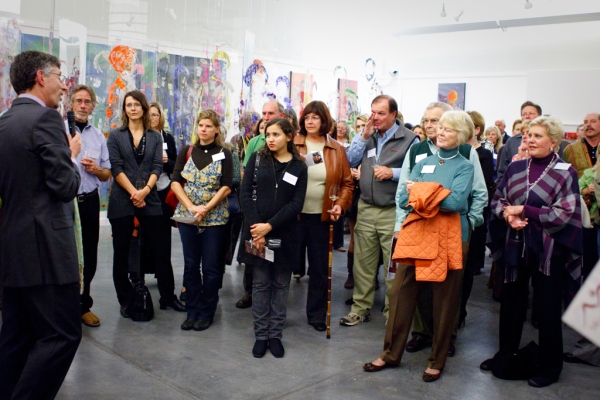
James Bronk addresses guests at the Mercado Global Benefit at the Napa Valley Museum
Despite the global economic recession, we have actually increased our sales in the past few months. We see this as a great opportunity for us to expand and incorporate more groups into our model, as we bring our fight against poverty to even more communities in the western highlands of Guatemala.
The funds raised at the Napa benefit will help finance the training of our new partner artisans. Because the majority of the women with whom we work have never been given the opportunity to learn to read or write we must provide them with some crucial tools so they can take full advantage of the opportunities they will have by working with Mercado Global. The funds will also help finance the sales orders these new groups receive. These women have no savings of their own so MG must purchase beads and other materials to make the jewelry so these women can earn a fair wage through these sales opportunities. Without the money raised at the event this would not be possible, and we would not be able to help more communities break the cycle of poverty!
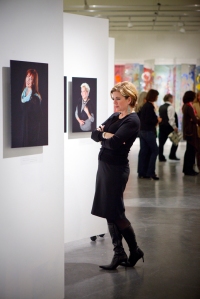 The Napa Valley Museum generously donated their space for the evening. This fantastic venue provided the perfect atmosphere for us to debut the Napa Valley Role Model Initiative photos. Modeled after our Role Model photo shoot in New York, this exhibit featured many prominent members of the Napa community modeling the work of our partner artisans as captured by host committee member photographer Suzanne Becker Bronk. Not only did people enjoy this photographic exhibition, they also were able to preview pieces from our new Holiday 2009 collection.
The Napa Valley Museum generously donated their space for the evening. This fantastic venue provided the perfect atmosphere for us to debut the Napa Valley Role Model Initiative photos. Modeled after our Role Model photo shoot in New York, this exhibit featured many prominent members of the Napa community modeling the work of our partner artisans as captured by host committee member photographer Suzanne Becker Bronk. Not only did people enjoy this photographic exhibition, they also were able to preview pieces from our new Holiday 2009 collection.
It was so moving to see the genuine interest in our work by so many members of the greater Napa community! We are so excited that people were moved by our impact and contributed to ensuring we are able to help combat poverty in more communities and increase the public’s access to fair trade products!
A very special thank you goes out to the event host committee, Suzanne Becker Bronk, James Bronk, Becky Stadiotto, Beth Mattei, Carol Glaser, Christine McClure, Irit Weir, Kathryn Havens, Kristine Walenburg, Luisa Heymann, Nancy Rose, Sabine Hirsohn, Sally Seymour, and Joanne Wakerlin. Without their hard work this event would not have been possible.
We must also thank the evening’s sponsors for their generous contributions: Cindy O’Brien Aesthetics, Bay Photo, Hagafen Cellars, Inc, the Girls in the Vineyard, Kathy McClure, Ravenswood Winery, Kathryn & Michael Havens, Tres Sabores, Luna Vineyards, Dean & Deluca, Browns Valley Market, Oxbow Cheese Merchant, and Sciambra Bakery.
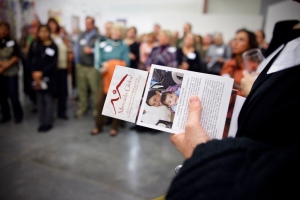
To check out a video featuring the event please clicks here.
Maya Weaving is Alive Today: Fair Trade Conference Bags and the Levi Strauss Foundation
First, a little history. Since the Classic Period of Maya civilization (250-900 CE), cotton has been a fundamental component in the Maya economy and especially in the creation of their beautiful traditional weavings. The maintenance of this style of weaving is a method that Guatemalan indigenous women have utilized to resist the many forces that threaten to erode their cultural heritage. During the Guatemalan Civil War, the military attempted to destroy the indigenous culture by preventing them from practicing their traditional arts. The Guatemalan army attacked many of the highland indigenous communities with which Mercado Global works, smashing thousands of weaving looms. Today, the impersonal tides of globalization threaten to sweep away all cultural heterogeneity in their path. How are these cultures to survive if it is more profitable to sell kitchy, inexpensive souvenirs for tourists?

Eulalia Saloj Guitz, from the Chaquijya Cooperative in Sololá, prepares her loom to weave.
One of the many satisfactions I find in my work with Mercado Global is providing these women the opportunity to adapt the artistic practices of their ancestors to modern demands. The fabric woven for Mercado Global’s fair trade, eco-friendly, and hand-made conference bags is made of 100% cotton, woven on back-strap and floor looms, and sewn and embroidered in the homes of our partner artisans.
The Mercado Global Fair Trade Conference Bag program is one of the principal means by which we provide indigenous women artisans an income-generating sales outlet. This year, we want to thank the Levi Strauss Foundation for providing so much work for our partner artisans by sponsoring the purchase of conference bags. As a result of these orders, we have been able to supply every single member of our eleven partner sewing and weaving cooperatives with consistent fair wage income.

Bartola Pixtay prepares conference bags for the Council on Foundations Conference, an order sponsored by the Levi Strauss Foundation.
This unprecedented opportunity for fair wage work has supported our partner artisans in their commendable efforts to break the cycle of poverty that afflicts so many highland indigenous people in Guatemala. For the first time, the expensive Guatemalan educational system which holds the key to social advancement is now within reach; the dirt floors which cause so much disease and discomfort in our partner artisans’ homes are being paved; rates of access to electricity and potable water have increased to levels well above the rural Guatemalan average; and the nutritional value of the food our partner artisans feed their children has increased dramatically. As we rapidly expand the market for fair trade products, it is exciting to think of the impact that bringing this model to more communities will have.
We’d like to thank Levi’s for helping make this possible.
Update from the Executive Director
Just back from Guatemala: it’s amazing to see impact we’ve had in our partner communities this year!
We work with nearly 400 women artisans who would have very little income without our help. And they have all had full time employment for the past few months! Just imagine the impact that has been having – their kids are having nutritious meals, all of their children are in school, and many of our partner artisans have been doing things to promote their families’ health (things that for Americans may seem very basic, but are a big investment in the regions where we work) like paving their floors (no more dirt floors!)
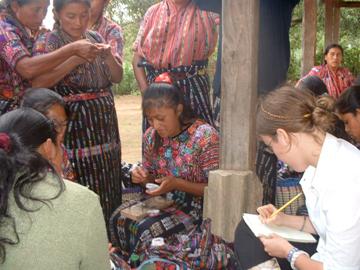
Members of three jewelry cooperatives and I discuss their work with Mercado Global.
It’s exciting to see how everyone working together – artisans, designers, sales team, clients, donors, advisors – has resulted in such big accomplishments. Our new partnerships with major specialty retail chains, catalogs, and department stores are now going to make it possible for us to double the number of women’s cooperatives we work with over the next 6 months. Stay tuned on how you can help us bring this model to more Highland families.
On this trip I met with many of the new groups that have been asking to partner with us. The only income the women in these groups have right now is the pennies that middlemen pay them for their artesanias (check out the blog entry below for more details). They have no savings or market of their own, so they have had no option but to work under these exploitative conditions. We’re hoping to raise the funds to bring these groups into our program – if we can raise the funds to train these new groups and finance sales for them, we already have the sales base in place to provide fair wage income to them and many other new groups.
All very exciting …
Next Thursday, November 5th, we will be unveiling our Winter Artisan Collection in Napa Valley. Through the benefit, we hope to raise funds to support our financial literacy and business training programs, increase our inventory fund to finance sales, and provide working capital to purchase materials for new cooperatives, in order to double the number of women’s cooperatives that we partner with in Guatemala. This initiative is an essential part of our efforts to scale our model in order to bring progress and growth to more Guatemalan communities.
Living in Guatemala, I have the daily opportunity to witness the positive changes created by our work here. This week, two representatives from a jewelry cooperative in Concepción, a highland town in the department of Sololá, came to the office to find out if we could take them on as a new partner cooperative. The women, Candelaria and Isabela Toc, are sisters. After Hurricane Stan, a category 1 storm that devastated the Guatemalan highlands, the land in Concepción was no longer usable for farming. Twenty-five of the town’s women, including Candelaria and Isabela, organized themselves into a jewelry cooperative in order to earn a non-agricultural living.
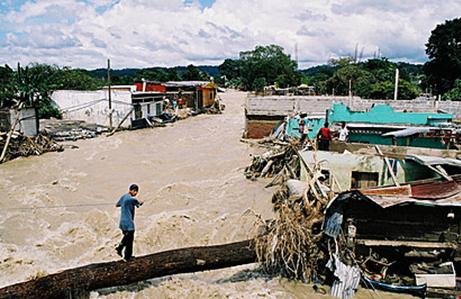
Destruction from Hurricane Stan
It hasn’t been easy. Without any surplus capital to purchase their own materials, the women of Concepción have been dependent on one buyer who supplies them with beads. This buyer has complete control over the prices he chooses to pay his artisans, and he isn’t in the habit of being generous. Candelaria said that at first he would pay them four quetzals per hour of work. “But each time,” she said, “it was less and less.”
Now they only earn only two quetzals per hour, less than enough money to live on. They heard about Mercado Global through a friend and decided to come try their luck with us. We were pretty shocked to hear what they were getting paid for their work. Women with this kind of determination and artistic talent deserve more.
Mercado Global will pay them up to twelve quetzals an hour, enough to send their children to school, feed their families nutritious food, and save a little to prepare for unforeseen setbacks. We will also supply them with the business training, technical capacity building, and capital to continue to increase their earnings. The women of Concepción don’t have a name for their cooperative yet, but they say they are thinking of calling it La Ceiba, Guatemala’s national tree. How appropriate, for, like the ceiba tree, they will soon come to represent growth in their country.
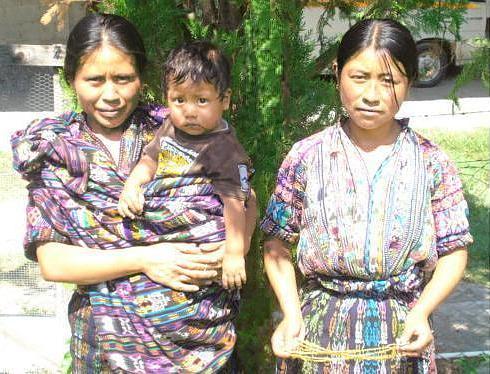
Candelaria and Isabela Toc, sisters from a jewelry cooperative in Concepción that seeks to partner with Mercado Global
Many communities with which we do not partner have heard of the increased incomes and development projects from which our partner communities have benefited. They, like the women of Concepción, seek to enjoy the new financial opportunities that come from working with us.
This is where our event in Napa Valley comes in. Through the event, Mercado Global seeks to raise $30,000 in order to train new groups and especially to increase our inventory fund so that we can help more cooperatives finance sales. Moreover, the funds will help us provide the necessary materials for the new cooperatives because, as in the case of Concepción, they have no surplus capital of their own. The evening will feature Mercado Global Executive Director Ruth DeGolia, and photographer Suzanne Becker Bronk will show an exhibition of Napa Valley’s own Mercado Global Role Models – women who make a difference in our community – wearing the artisan pieces.
The event will be held on Thursday, November 5th at the Napa Valley Museum, 55 Presidents Circle in Yountville from 6:30 pm to 8:30 pm. For an invitation to the event, contact Suzanne Becker Bronk at 707.257.1513 or email at suzanne@photodance.com.
Hit the Ground Running
How many indigenous women cooperatives in the world are making products for Bloomingdale’s? Very few, if at any at all.
Here at Mercado Global the word “impossible” does not exist. All of us on the team think big and see that our visions come to fruition. As a result, we have been able to penetrate a market saturated with socially irresponsible labor conditions and bring fair trade, fashion forward products into the mainstream.
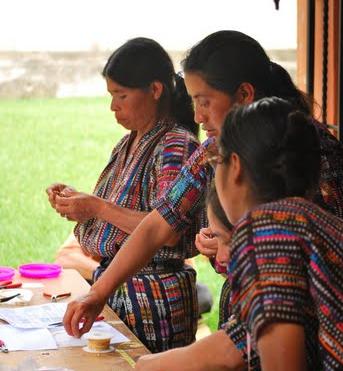
(From Left) Marcela Quisquiná, Petrona Chiroy Yaxón, and Emilia Raxtin, from the cooperative Artesanas Mayas, creating designs for Bloomie’s Trunk Show
As the Director of Production, it is my job to ensure that the visions of the designer, who is in NYC, are translated to our partner artisans, who are in the rural highlands of Guatemala. Thus, I am a facilitator, a link, and a mediator of the meeting of two different worlds.
The production of our collection for the Bloomie’s Trunk Show (taking place at Bloomingdale’s, 59th St., NYC on October 29 – November 1) was also my first task as I transitioned my position from the US to Guatemala. There were many challenges, but the results of our labors reflect the beauty of what we do here and the beauty I found in my experience of linking two worlds.

(From Left) Estela Quisquiná, Petrona Chiroy Yaxón, Rosario Mendoza, and me, exploring ways to finish multi-strand necklaces on my Mac
My job starts with a morning call with the designer and sales team to review the products that were made the day before. After my call the artisans arrive and I outline what we are doing and why. I want the women to understand what Bloomingdale’s is and to feel connected to the products they are making.
I love that my job is more than just overseeing production. Every day, whether I am in the storage closet in the office, outside working with the artisans, or on the phone with our designer, I find inspiration. This inspiration is a product of the true essence of partnership. Moving forward, I am eager to foster new partnerships with the talented artisans across Guatemala’s beautiful highlands.
Come see the results of this partnership at the Bloomie’s Trunk Show, going on from October 29 – November 1 at Bloomingdale’s on 59th street in New York City.

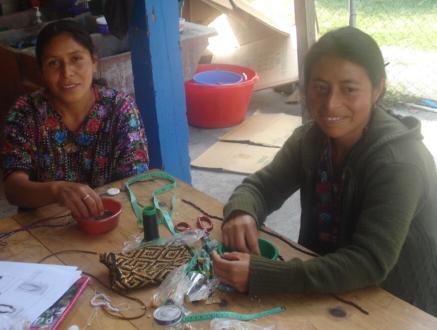
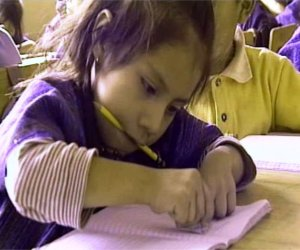
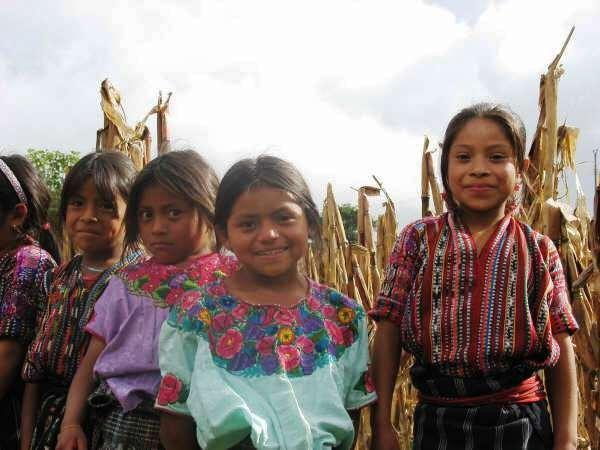
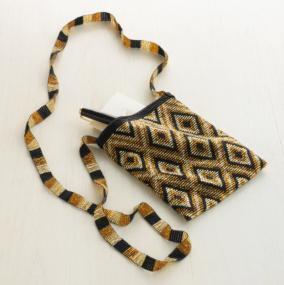

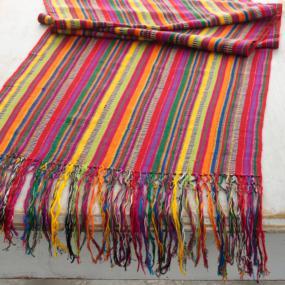

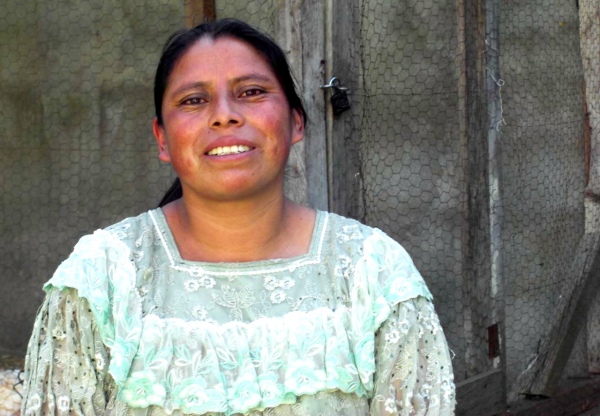







 Follow us on Twitter
Follow us on Twitter Join us on Facebook
Join us on Facebook Sign up for Mailing List
Sign up for Mailing List